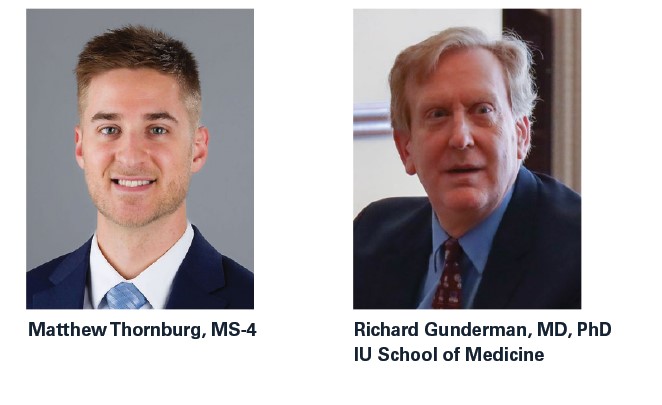
Physician wellness literature tends to be packed with data-driven research and light on inspiring stories. While there is much to be learned about topics such as burnout by studying large numbers of physicians in the aggregate, some important insights flow only from more in-depth biographical portraits that offer a glimpse into the soul of a colleague.
An example is the story of Dr. S., a cardiologist at an Indiana community hospital.
One day, a medical student showed up for the first day of his elective rotation with Dr. S. As they sat down to breakfast to review expectations, Dr. S. proceeded to apply copious amounts of barbecue sauce and salt and pepper to his ham and cheese omelet, leading the perplexed medical student to muse, “You might think a cardiologist would take better care of himself, but to each his own.”
Soon, the conversation turned to fundamental topics in cardiology, such as EKGs, echocardiograms, and stress tests.
As the day went on, it became clear that Dr. S.’s days were jam-packed and fast-paced, leading the medical student to wonder if he could keep up. At 2 p.m., Dr. S. led the student to the infusion center, where he settled into a big leather chair. A nurse approached, and Dr. S. asked if she wanted him to take his shirt off. She said yes, so he proceeded to bare his chest.
Dr. S. then turned to the student and said, “Oh, by the way, I have cancer.”
Chest port accessed and the infusion underway, Dr. S. then spent the next hour posing questions on cardiology topics, pausing occasionally to deliver mini-lectures on each topic.
What interested the student even more than the cardiology was the cardiologist. How did he manage to keep caring for patients and teaching full steam while undergoing chemotherapy? As it turned out, one of the side effects was loss of smell, which explained all the sauce and salt he sprinkled on his omelet.
Dr. S. shared his story with the student. Since his youth, he had been a person of high ambition, finishing college in just three years, taking just three more to complete medical school, and then racing through residency and fellowship.
“For me, it was always go, go, go,” he said, “and I never stopped to think about anything.”
In practice, he routinely worked 80-hour weeks. Married with children, he spent little time with his family. One day, when he was about 35, his wife told him she was thinking of leaving him.
This was a wake-up call for Dr. S. He knew he had to make a change. Even though he was a non-believer, he began attending church with his family. He started participating in a Bible study. It dawned on him that he had a higher calling, and the more time he spent reading and discussing scripture, the more apparent it became that he was also becoming a better doctor, a better husband and father, and a better man.
“I had been thinking too much of myself,” Dr. S. recalled, “but I realized I needed to put others first.”
Dr. S. changed, and in ways that affected his response, decades later, to his own cancer diagnosis. For one thing, he did not ask for time off, instead continuing to devote himself to serving others.
“If I was going to ask my patients to do hard things,” he said. “I needed to do hard things myself.”
Now, Dr. S. takes extra time to get to know patients and families, who often report that he made their day. Knowing of his faith, many also offer that they are praying for him.
Had Dr. S. not chosen to reveal his diagnosis, the medical student would never have realized he was sick. He laughs easily, saying that he enjoys being “appropriately inappropriate,” and never misses an opportunity to introduce something funny, hopeful, or inspiring into the workday. He likes to say, “Nothing is worth doing without joy,” and sees it as his mission to spread joy everywhere he goes, among patients, nurses, and medical colleagues.
There is no special ICD-10 code for Dr. S.’s disease and his response to it. His approach to patients and their diseases generates no special CPT codes. He is not getting paid extra to be extra compassionate and encouraging to his patients.
Yet, even amid a life-threatening diagnosis, Dr. S. is making a special difference. He has good reason to burn out, yet he is among the least burned-out of physicians, likely because he works and lives with a deep sense of dedication to a
higher calling.
Dr. S. is a devoted teacher, tirelessly reviewing the fundamentals of pathophysiology, diagnosis, and treatment. Yet, he is also teaching something even more important. He has made his work and his life his message, living out in daily practice the things that mean the most to him. He is a man on a mission, drawing on a deep wellspring of resilience and inspiration, and in so doing serving as a living reminder of the things that matter most in medicine and in life.
Editor’s note: The physician described in this article gave the writers permission to share his story. This is the first article in what will be a series of physician wellness-centered pieces written or co-written by Dr. Gunderman, who is the chair of ISMA’s physician wellness steering committee.